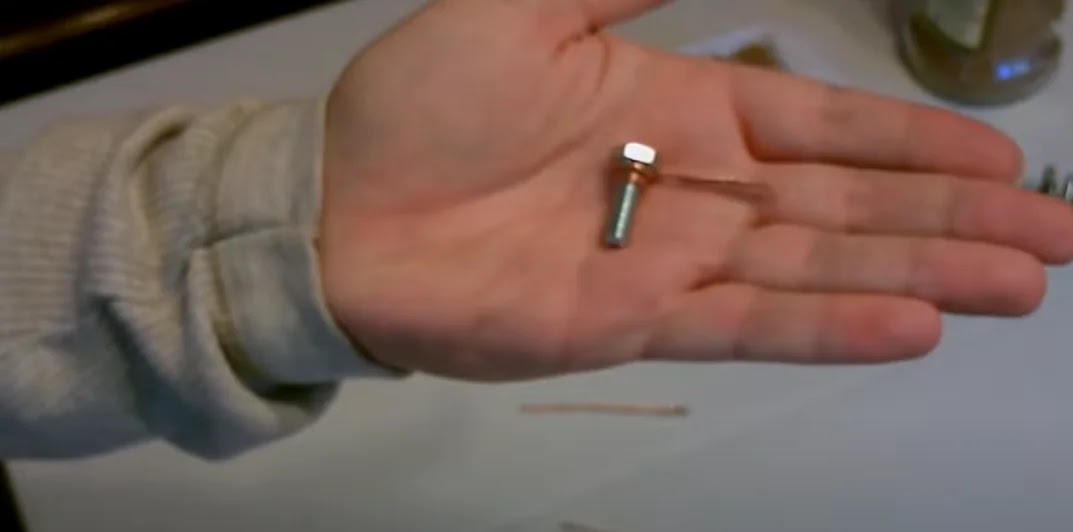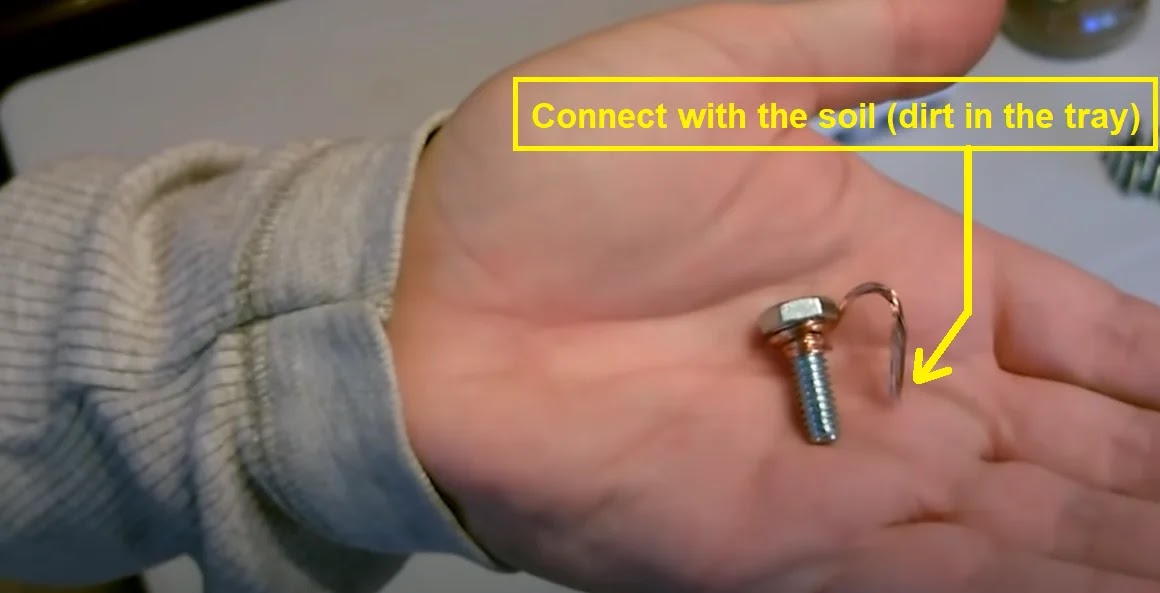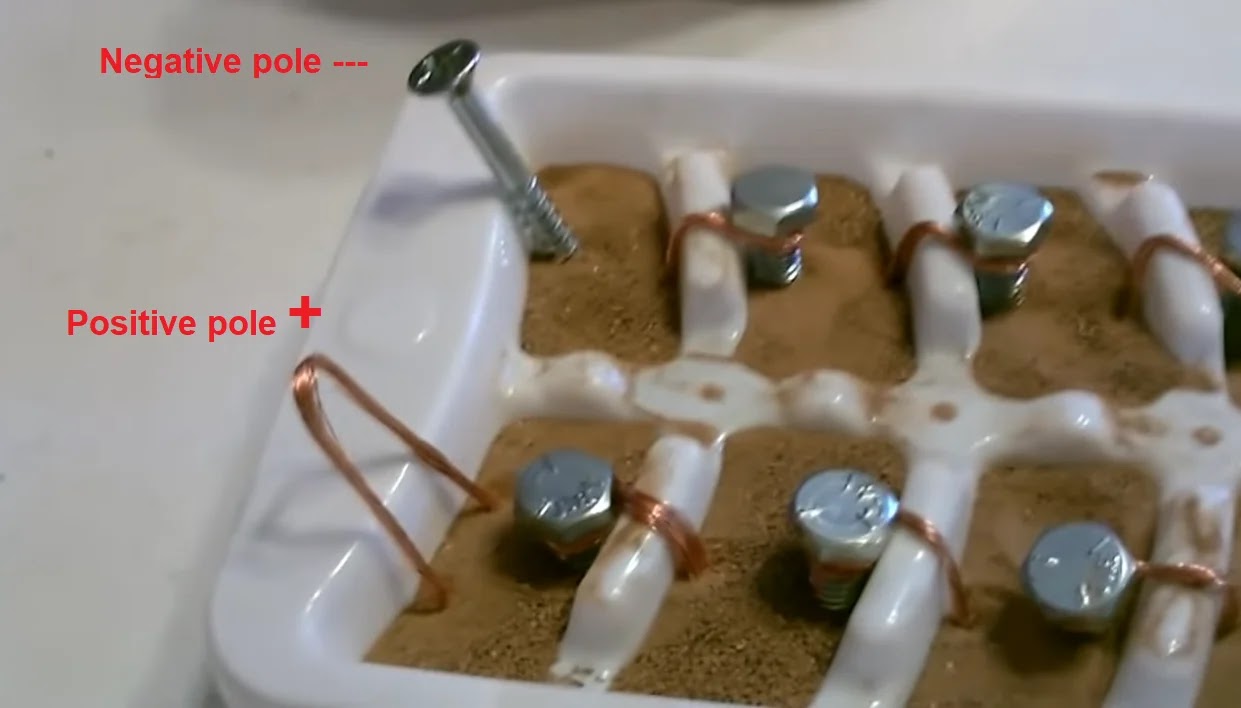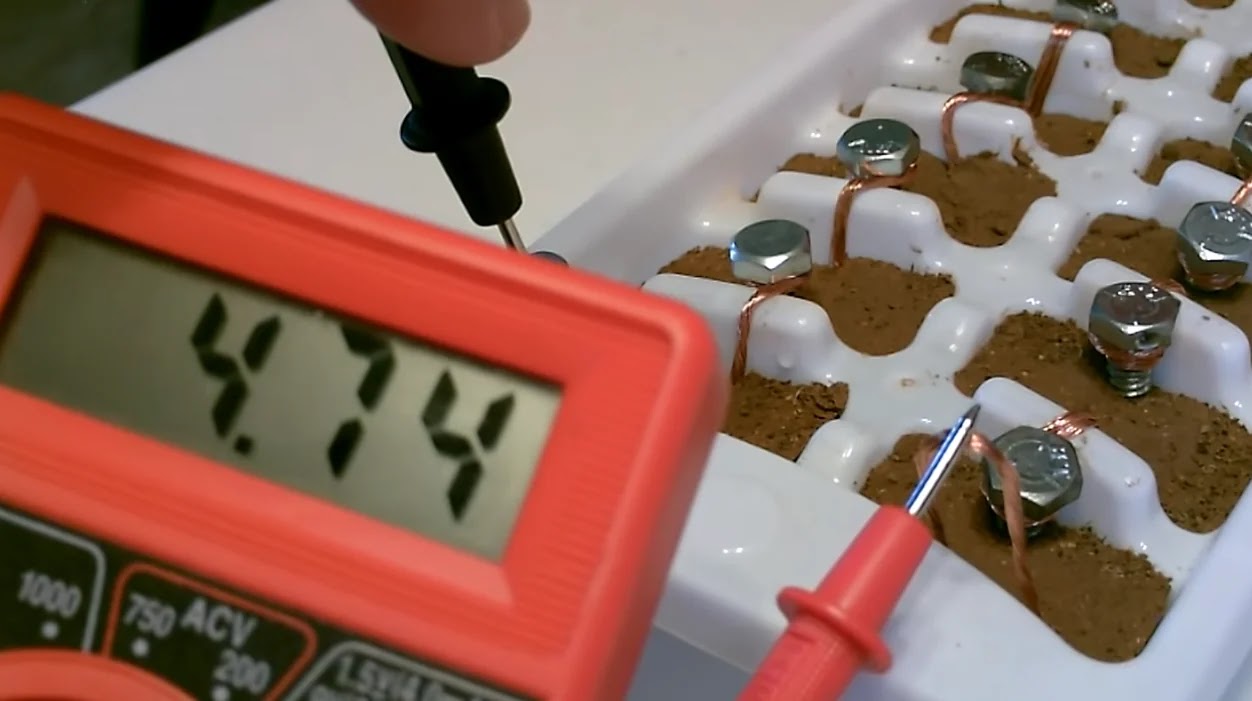Earth battery on Ice Tray
In today's quick tutorial, we'll explore the fascinating world of earth batteries and how you can create one yourself. These unconventional power sources might seem like something out of a science fiction story, but they harness the Earth's natural properties to generate electricity. With just a few simple components, you'll be amazed at the potential energy right beneath your feet.
The Components You'll Need
Before we dive into the step-by-step process, let's take a look at the essential components required to build your own earth battery. You'll need:
Copper wire
Galvanized bolts
Ice cube tray
Soil or dirt
These seemingly basic items will come together to create a functional energy source capable of generating a surprising amount of voltage.
With this model, the ice tray is likened to the base of the ground. Dirt combined with the ice tray is like a real ground. Making a high voltage Earth Battery is just a matter of scaling. Each corresponding soil type will be a type of dirt in the experiment below.
Step 1: Prepare the ground, dirt
The first step in building your grounding pin involves preparing the ground. Find a suitable spot in your garden or yard where you can dig a small hole. The soil in this area will play an important role in battery function.
Soil poured into the tray corresponds to dirt
Each different type of soil in the backyard will yield a relatively different voltage at the Rock Tray Earth Power model.
Step 2: Prepare copper wire
At the ice tray:
Once you've chosen a spot and dug a small hole, it's time to prepare the copper wire. Carefully strip the wire, as the upper copper wire has an insulating coating, and then cut it into pieces about 2.5 to 3 inches long. These pieces of copper wire will act as the core conductive material in your battery.
Prepare copper wire
Step 3: Insert the battery
Have copper wire ready, take two pieces of wire and twist them together. This twisted copper wire will form the anode of the battery. Now, take a galvanized bolt and wrap the twisted wire around it tightly. This step creates a solid connection between the copper and the bolt.
Wind the copper wire into the bolt
Step 4: Dip into the Earth - dirt
Gently insert the galvanized bolt along with the attached twisted copper wire into the soil you prepared earlier. Make sure the bolt is firmly seated in the ground. This setup sets up the first cell of your earth pin.
Plug the copper wire wrapped bolts into the ground (dirt)
Note when plugging the electrical poles to ground: the copper wire is responsible for grounding the "virtual series connection" with the negative pole. Then it will become the positive pole
The piles (pair of electrodes) are connected in series on the rock tray through the ground. The positive pole at the copper wire is plugged deep into the ground, the negative pole is at the galvanized iron bolt plugged into the ground.
The ground connection for the Earth Battery has many different ways, with many different inventions. So please refer to: How to Make Earth Battery
Step 5: Build more cells
To generate a higher output voltage, repeat the process to generate more cells. Each cell consists of a galvanized bolt, a twisted copper wire wound around it, and a piece of ground. You can make multiple cells and arrange them in a series to increase the overall voltage of the grounding pin.
In addition, using large copper and galvanized iron materials, will produce higher voltage. Now, the ground is part of the Eternal Battery!
Use soil in place of dirt with the ice tray pattern. Scaling for free energy.
★ How to Make Earth Battery (Full version)**: 👉** Ground Power Generator ⭐ ⭐ ⭐ ⭐ ⭐You must simply plug a couple of wires into the ground …and not worry about weather conditions for your rest of life
Power output and application
The output voltage of the grounded pin might surprise you. With a well assembled setup you can expect to produce about 4.5 volts to 5 volts. This voltage level is enough to power many different devices, including those with LCD screens. Devices such as calculators, pedometers, and digital watches can be powered by Earth.
The voltage measured from the Earth battery model test on the ice tray is close to 5V
Show potential
In our tests, we have successfully powered devices with LCD screens using power from our earth batteries. It is noteworthy that we can illuminate LCD screens and even LEDs. The output power is large enough to power multiple LEDs simultaneously, showing the potential this simple setup has to offer.
You may think, Earth battery produces low voltage, just enough to light up LEDs, expensive to scale up to high voltages. But that's not correct. Power from the ground: Generate 39V with only 1 ground terminal (video)
If you are interested in grounded, high voltage free energy technology, with the term "sea of energy emerging from the earth", check out Tesla's technology: Tesla's Free Energy ( ⭐ ⭐ ⭐ ⭐ ⭐ ).
Considering the significant output voltage of a grounded battery, it's interesting to think about its potential applications. The output voltage closely matches the charging requirements of many electronic devices, making it possible to charge devices that normally operate at around 5 volts.
This model battery on the ice tray will recharge itself when water or diluted vinegar is added. To prevent the metal poles from rusting quickly, we just need to add water.
Adding water, keeping moisture, the Earth battery on this ice tray model will recharge itself.
Therefore, when applying this model to build an earth battery in the garden, you should choose a location near a drain, or places with high humidity, to avoid having to add more water.
If you are concerned that galvanized iron will rust, you can try another material. View article: Earth Battery Building Materials
Copper takes a long time to rust, and galvanized iron will be less durable than copper. However, the maintenance period will be in several years or more.
Conclusion
Building an earth battery is an engaging and educational endeavor that showcases the potential of alternative energy sources. With just copper wire, galvanized bolts, a rock tray, and some earth, you can harness the Earth's natural energy to power a variety of devices. This simple yet effective concept opens the door to innovative energy solutions that are accessible to anyone willing to explore the wonders at their feet.
In particular, the invention of the earth battery was suppressed by Nathan Stubblefield, what remained left many scientists wondering and wanting to re-develop this technology: The Electrical Battery by Nathan Stubblefield
Important to get grid-like power out there: Once you've got battery-like power (build a Ground Power Generator ⭐), then you need to add a device called an Inverter to convert DC to AC. It's not expensive equipment, see: Inverter for Earth Battery.










